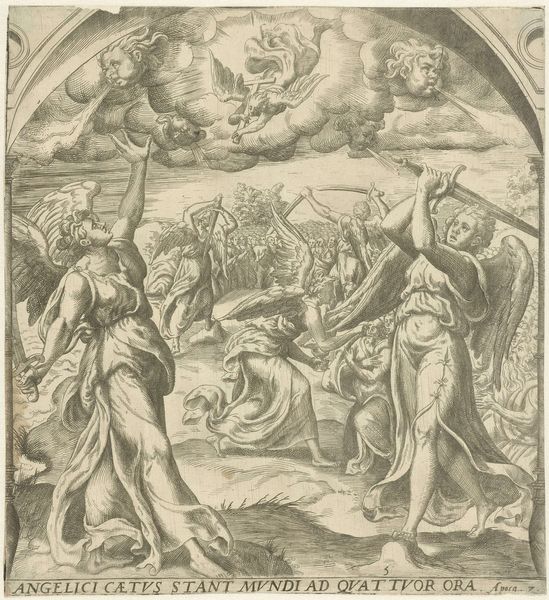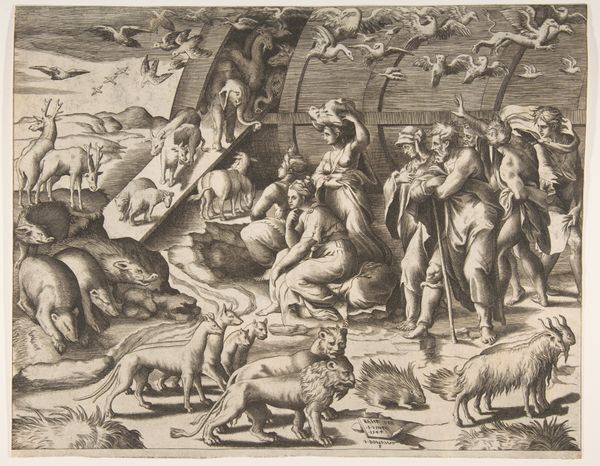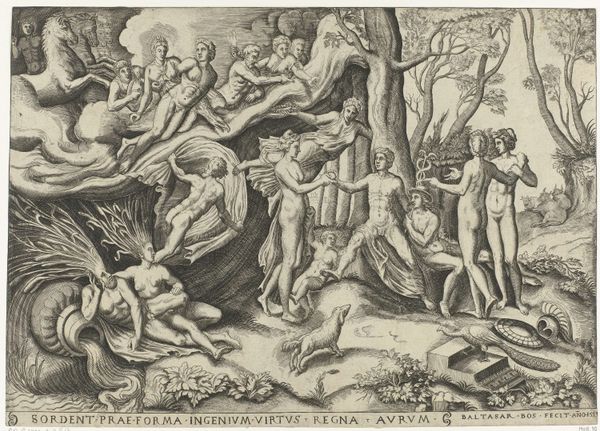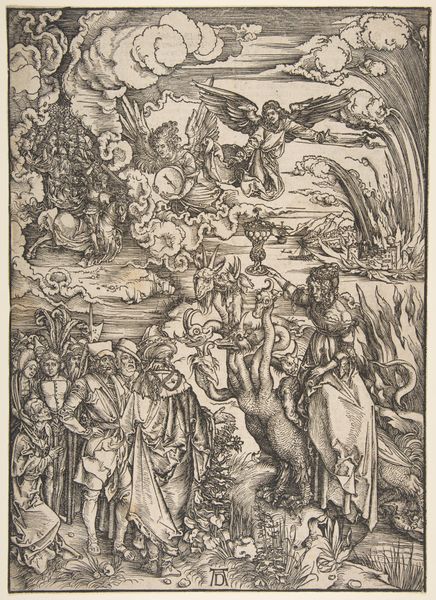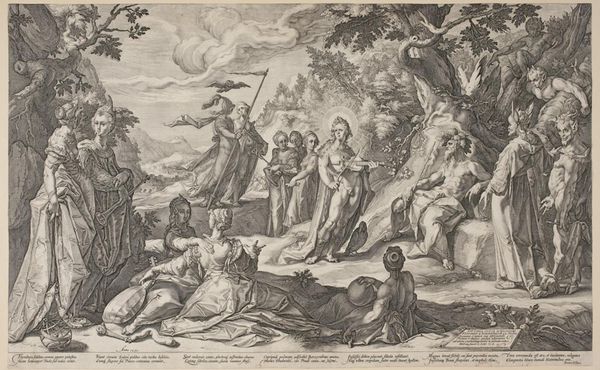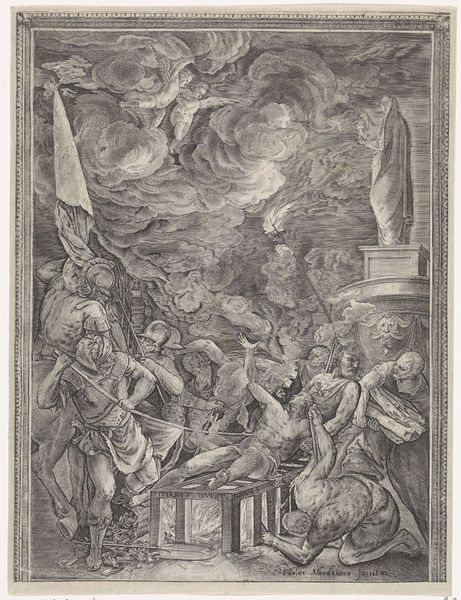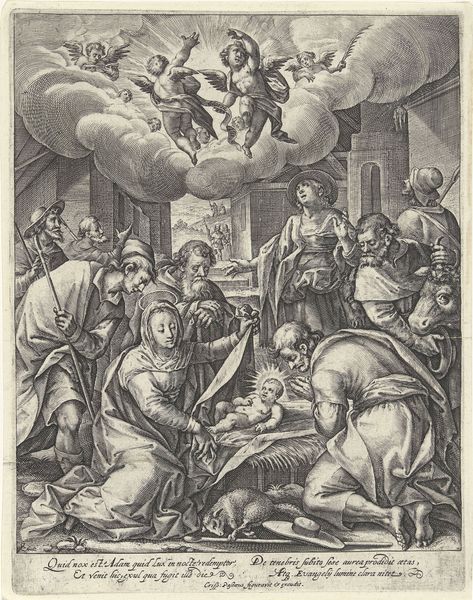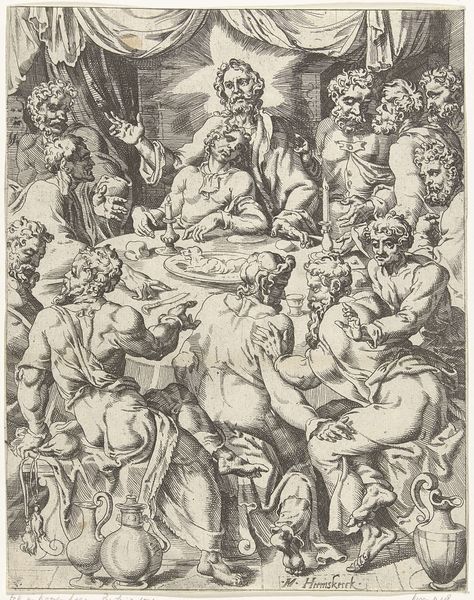
print, engraving
#
allegory
# print
#
figuration
#
line
#
history-painting
#
northern-renaissance
#
engraving
Dimensions: height 80 mm, width 106 mm
Copyright: Rijks Museum: Open Domain
Curator: Before us, we have an engraving, dating sometime between 1554 and 1610. It’s titled "The Rich Man in Hell Sees Abraham with Lazarus." It comes to us from an anonymous artist, and the work is held here at the Rijksmuseum. Editor: Immediately, I’m struck by the sharp contrasts. The composition is essentially cleaved in two: a densely worked inferno on one side, juxtaposed against a serene, light-filled celestial realm. It creates a palpable sense of opposing forces. Curator: Precisely. The artist employs line work meticulously, to emphasize the dichotomy between the torments of the rich man and the beatific peace enjoyed by Lazarus. Semiotically, we’re confronted with symbols of punishment and reward. Editor: And those symbols carry considerable weight. The flames and demons on the left – conventional representations of hell – but rendered here with grotesque specificity. Whereas Abraham and Lazarus float on billowing clouds with winged cherubs attending them. This invokes the long tradition of Christian iconography depicting the afterlife, revealing the cultural memory of the parable itself. Curator: Indeed. Notice the carefully delineated gestures: The rich man, writhing and supplicating, versus Abraham’s detached, almost judicial pose. The formal tension underscores the ultimate futility of earthly wealth in the face of divine judgment. The texture, the sharp almost violent lines on the left drawing out our horror in sharp contrast with the comparatively smooth forms to the right, lulling us into divine bliss. Editor: And even within those contrasting halves, there's an interplay of familiar images: castles of light versus those of darkness, angelic versus demonic figures, reinforcing the theological divide, a common thread of human culture from a very specific time. It asks, where will we go? Curator: What’s remarkable is how this small print, through formal construction and symbolic density, evokes such a profound moral landscape. It’s not merely illustrative but rather, a compelling visual argument about salvation and damnation. Editor: Ultimately, it is a sobering reminder that the symbols we choose, the images we venerate, shape not only our perception of the world but also, perhaps, its course. It also tells a simple story: a visual representation of something fundamental to our humanity.
Comments
No comments
Be the first to comment and join the conversation on the ultimate creative platform.


